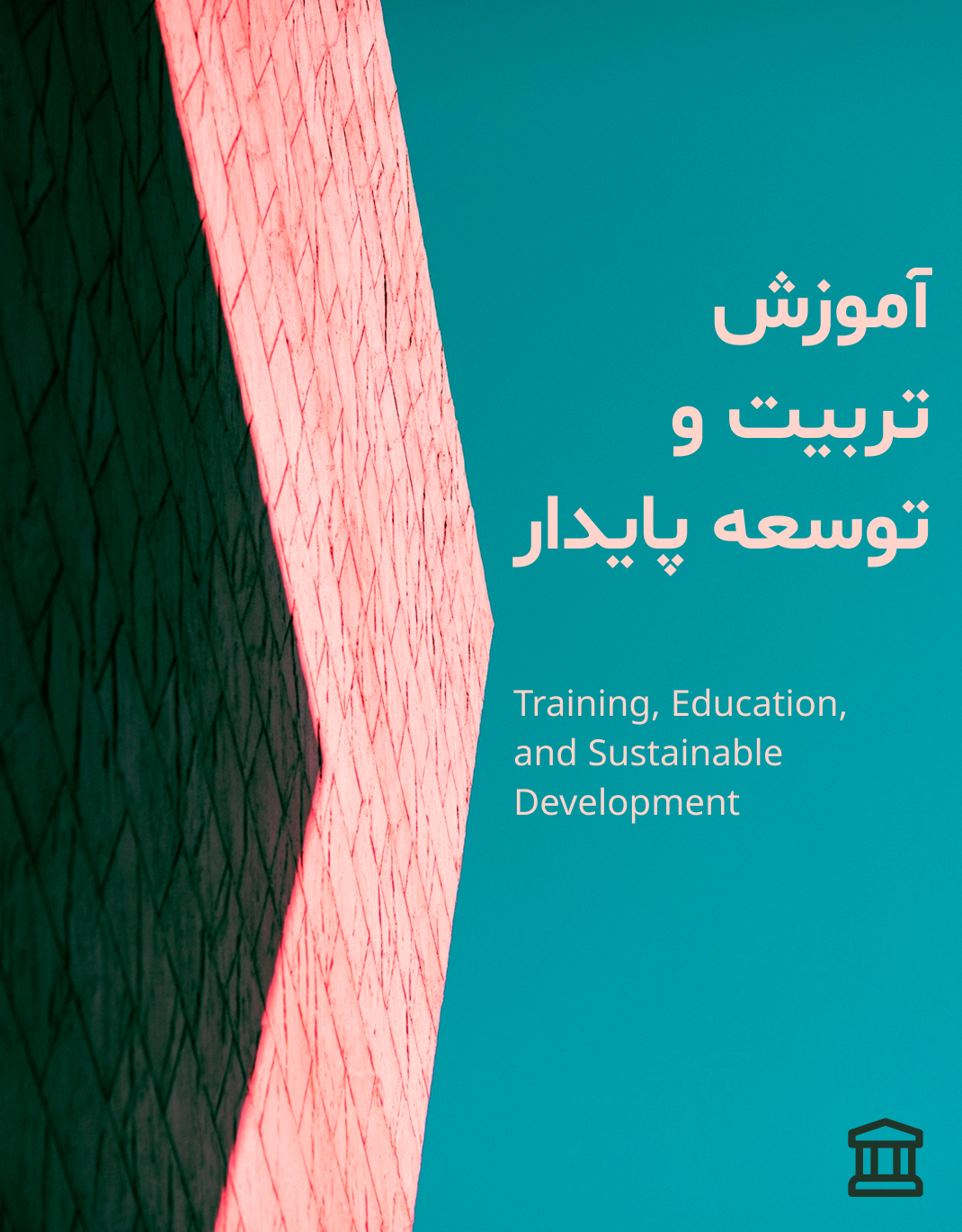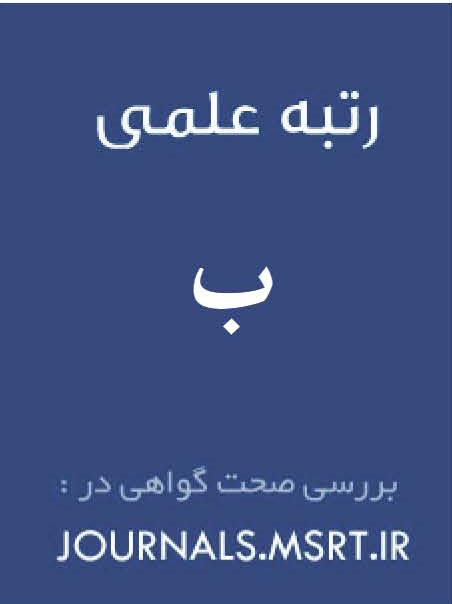Identification and Ranking of Key Factors in Managing Social Traps in Iranian Public Organizations
Keywords:
Organizational Culture, Ethical Values, Social Relationships, Public Organizations, Social TrapsAbstract
This study aimed to identify and rank the key factors influencing the management of social traps in Iranian public organizations. A mixed-methods design was employed. In the qualitative phase, thematic analysis was conducted on 22 semi-structured interviews with experts in management, human resources, sociology, and psychology to identify key factors. In the quantitative phase, the fuzzy DEMATEL method was applied using data from 12 of the same experts to rank the identified factors. Qualitative data were analyzed using MAXQDA 2020, and quantitative data were analyzed with MATLAB. Thematic analysis yielded 920 semantic units categorized into 122 initial codes, 21 sub-themes, and 7 main themes: social, ethical-value-based, organizational, psychological-emotional, behavioral, cognitive, and managerial. Fuzzy DEMATEL results revealed that the social factor (D+R=4.132) and the ethical-value-based factor (D+R=3.722) were the most influential, while the managerial factor (D+R=1.530) showed the least influence and interaction. This study proposes a conceptual, localized, and multidimensional model for managing social traps in Iranian public organizations. By emphasizing the strengthening of social relationships, ethical values, organizational reforms, and training programs for critical thinking, the model can help reduce inefficiencies, enhance public trust, and improve the quality of public services.
Downloads
References
Akbari Imami, S., Abedin, B., & Jami Pour, M. (2024). Strategic Consensus Challenges from the Perspective of Public Managers: Application of Social Network Analysis Methodology. Iranian Journal of Public Administration Studies, 7(1), 29-71. https://www.jipas.ir/article_190203_en.html
Andina-Díaz, A., Feri, F., & Meléndez-Jiménez, M. A. (2023). The bureaucracy trap. Economics Letters, 228, 111166. https://doi.org/10.1016/j.econlet.2023.111166
Axelrod, R. (1984). The evolution of cooperation. Basic Books. https://books.google.com/books/about/The_Evolution_of_Cooperation.html?id=NJZBCGbNs98C
Bazerman, M. H., & Tenbrunsel, A. E. (2011). Blind spots: Why we fail to do what's right and what to do about it. Princeton University Press. https://doi.org/10.1515/9781400837991
Berens, S. (2020). Opting for exit: informalization, social policy discontent, and lack of good governance. Latin American Politics and Society, 62(2), 1-28. https://doi.org/10.1017/lap.2019.58
Bryson, J. M. (2015). Strategic planning for public and nonprofit organizations. In (pp. 515-521). Elsevier Inc. https://doi.org/10.1016/B978-0-08-097086-8.74043-8
Coldwell, D. A. (2019). Negative influences of the 4th industrial revolution on the workplace: Towards a theoretical model of entropic citizen behavior in toxic organizations. International journal of environmental research and public health, 16(15), 2670. https://doi.org/10.3390/ijerph16152670
Cumming, G. S. (2018). A review of social dilemmas and social‐ecological traps in conservation and natural resource management. Conservation Letters, 11(1), e12376. https://doi.org/10.1111/conl.12376
Daliri, H. (2019). Evaluating the Future of Employment and Unemployment, With an Approach to General Policies of Employment. Quarterly Journal of The Macro and Strategic Policies, 7(27), 346-371. https://doi.org/10.32598/JMSP.7.3.2
Erlingsson, G. Ó., Jónsdóttir, G. A., & Kristinsson, G. H. (2022). Does legitimacy mitigate corruption? The relevance of social traps in low-corruption contexts. International Journal of Public Administration, 45(14), 1027-1038. https://doi.org/10.1080/01900692.2021.1955926
Hadziahmetovic, N., & Salihovic, N. (2022). The role of transparent communication and leadership in employee engagement. International Journal of Academic Reserach in Economics and Management Sciences, 11(2). https://doi.org/10.6007/IJAREMS/v11-i2/14067
Hajilou, F., & Rostami, M. (2024). Social resilience approach for disaster risk reduction. Environmental Hazards Management, 11(3), 259-272. https://jhsci.ut.ac.ir/article_100224.html?lang=en
Hardin, G. (1968). The tragedy of the Commons. Science, 162(3859), 1243-1248. https://doi.org/10.1126/science.162.3859.1243
Hu, S., Ji, F., & Li, D. (2023). Impacts of Social Media Usage in Facilitating Social Commerce: The Roles of Social Support and Cultural Identity Change. In (pp. 276-285). Springer Nature Switzerland. https://doi.org/10.1007/978-3-031-35921-7_19
Inwang, I. U., Okponganam, G. E., Odohoedi, J. O., & Attat, N. T. (2024). Conflict Management Strategies and Administrative Effectiveness: Issues in Public Secondary Schools in Akwa Ibom State. International Journal of Multidisciplinary Innovative Research, 4(3), 73-81. https://www.academia.edu/124724172/Conflict_Management_Strategies_and_Administrative_Effectiveness_Issues_in_Public_Secondary_Schools_in_Akwa_Ibom_State
Iqbal, J., Asghar, A., & Asghar, M. Z. (2022). Effect of despotic leadership on employee turnover intention: mediating toxic workplace environment and cognitive distraction in academic institutions. Behavioral Sciences, 12(5), 125. https://doi.org/10.3390/bs12050125
Kahneman, D. (2011). Thinking, fast and slow. Farrar, Straus and Giroux. https://books.google.com/books/about/Thinking_Fast_and_Slow.html?id=AV9x8XakdV0C
Killingsworth, P., & Eschenbacher, L. (2018). Designing organizational structures: Key thoughts for development. The Bulletin of the American Society of Hospital Pharmacists, 75(7), 482-492. https://doi.org/10.2146/ajhp170657
Lazem, S., & Gracanin, D. (2010). Social traps in second life 2010 Second International Conference on Games and Virtual Worlds for Serious Applications, https://doi.org/10.1109/VS-GAMES.2010.29
Manes, E., Shapira, D., & Tobol, Y. (2018). Traps and incentives. The BE Journal of Theoretical Economics, 18(2), 20160036. https://doi.org/10.1515/bejte-2016-0036
Mohammadzadeh, S., & Yarmohammadi Vasel, M. (2018). Preliminary estimation of the reliability and validity of the social trap scale. Social Cognition, 7(1), 160-143. https://sc.journals.pnu.ac.ir/article_4864.html?lang=en
Naznen, F., Al Mamun, A., & Rahman, M. K. (2022). Modelling social entrepreneurial intention among university students in Bangladesh using value-belief-norm framework. Current Psychology. https://doi.org/10.1007/s12144-022-04119-2
Nikitara, M., Dimalibot, M. R., Latzourakis, E., & Constantinou, C. S. (2024). Conflict Management in Nursing: Analyzing Styles, Strategies, and Influencing Factors: A Systematic Review. Nursing Reports, 14(4), 4173-4192. https://doi.org/10.3390/nursrep14040304
Ostrom, E. (1990). Governing the commons: The evolution of institutions for collective action. Cambridge university press. https://doi.org/10.1017/CBO9780511807763
Ostrom, E. (2009). Understanding institutional diversity. Princeton university press. https://doi.org/10.2307/j.ctt7s7wm
Pollack, L., Munson, A., Zepeda, E., Culshaw-Maurer, M., & Sih, A. (2022). Variation in plastic consumption: social group size enhances individual susceptibility to an evolutionary trap. Animal Behaviour, 192, 171-188. https://doi.org/10.1016/j.anbehav.2022.07.010
Radpour, F., Farrokh Seresht, B., Kiakojori, D., & Taghipour, H. A. (2024). Designing a Model of Effective Personality Dimensions on the Level of Managers' Communication Skills. Sociology of Education, 10(1), 21-30. https://sid.ir/paper/1496111/en
Rahimzadeh, F., Shokouhifard, S., & Hazeri Niri, H. (2022). The effect of corruption on financial inclusion (application of the generalized method of moments approach). Economic Modeling Quarterly Journal, 16(57), 33-48. https://journals.iau.ir/article_692466.html?lang=en
Rahmati, M. H., & Pilehvari, A. (2019). The productivity trend in Iran evidence from manufacturing firms. Economics of Transition and Institutional Change, 27(2), 395-408. https://doi.org/10.1111/ecot.12200
Rajabi Farjad, H., Mirsepasi, N., & Asadi, V. (2024). Identifying and prioritizing factors affecting organizational vitality. Iranian journal of management sciences, 19(73), 99-118. https://journal.iams.ir/article_420.html
Rasool, S. F., Wang, M., Tang, M., Saeed, A., & Iqbal, J. (2021). What a toxic workplace environment effects the employee engagement: The mediating role of organizational support and employee wellbeing. International journal of environmental research and public health, 18(5), 2294. https://doi.org/10.3390/ijerph18052294
Salahi Kojour, A., Razavi, S. M. H., Amirnejad, S., Mohammadi, N., & Taghipourian, M. J. (2020). Investigating the factors affecting smart tourism in the hybrid technique-based sports industry. Journal of Tourism Planning and Development, 9(34), 101-120. https://tourismpd.journals.umz.ac.ir/article_3099.html
Samadi Ghorbani, S. (2022). A review of existing indicators for assessing the level of "transparency" achievement in the administrative system of the Islamic Republic of Iran, with an emphasis on the role of the Supreme Audit Court National Conference on Enhancing Transparency, Tehran. https://en.civilica.com/doc/1854775/ https://en.civilica.com/doc/1854775/
Senge, P. M. (2006). The fifth discipline: The art and practice of the learning organization. Broadway Business. https://books.google.com/books/about/The_Fifth_Discipline.html?id=bVZqAAAAMAAJ
Sterman, J. D. (2000). Business Dynamics: Systems thinking and modeling for a complex world. MacGraw-Hill Company. https://books.google.com/books/about/Business_Dynamics.html?id=CCKCQgAACAAJ
Tavakoliyan Ardakani, S. (2023). The Effect of Toxic Organizational Environments on Employees' Sense of Belonging with Regard to the Mediating Role of Organizational Support and Employee Well-Being. New Research Approaches in Management Sciences, 8(28), 1-12. https://jnraims.ir/article-1-307-en.html
Yazdani, R., Alipour-Vaezi, M., Kabirifar, K., Salahi Kojour, A., & Soleimani, F. (2022). A lion optimization algorithm for an integrating maintenance planning and production scheduling problem with a total absolute deviation of completion time's objective. Soft Computing, 26(24), 13953-13968. https://doi.org/10.1007/s00500-022-07436-7
Downloads
Published
Submitted
Revised
Accepted
Issue
Section
License
Copyright (c) 2025 سجاد توپااسفندیاری (نویسنده); علیرضا بناگر; داود کیاکجوری, عظیم صلاحی کجور (نویسنده)

This work is licensed under a Creative Commons Attribution-NonCommercial 4.0 International License.

